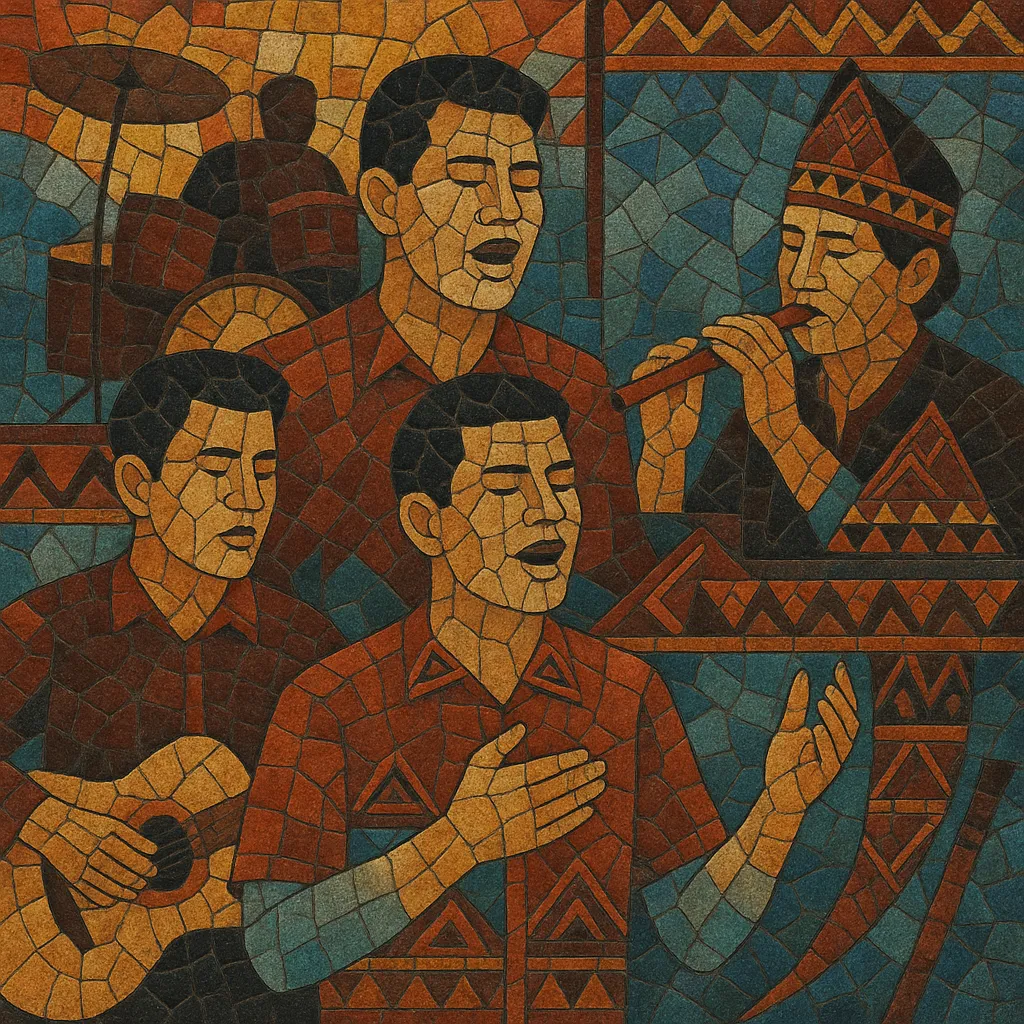Pop Batak is a regional Indonesian pop style rooted in the musical traditions and language of the Batak peoples of North Sumatra, especially the Toba Batak. Songs are typically sung in the Batak language, feature strong vocal harmonies, and fold modern pop arrangements into melodies derived from local folk idioms.
Arrangements favor guitars, keyboards, bass, and drum kits, often augmented by traditional colors like the hasapi (lute) and sulim (flute). The genre is renowned for its rich, chorus-led refrains—frequently performed by male vocal trios—and lyrics that celebrate love, family, faith, migration, and longing for the Lake Toba homeland.
Rhythmically it leans on mid‑tempo 4/4 pop and ballad grooves, at times borrowing backbeat lilt and ornamentation from dangdut and the tor-tor dance pulse. Harmonically it stays in major keys with frequent key-lift modulations in the final chorus, and signature three-part harmonies in parallel thirds that give the songs their soaring, heartfelt appeal.
Pop Batak emerged in the 1970s as Batak musicians in North Sumatra and Jakarta adapted local folk repertoire and new compositions into contemporary pop formats. Vocal trios—already central to Batak social singing—translated naturally into studio productions, creating a recognizable sound built on close harmonies and guitar/keyboard accompaniment.
Affordable cassettes and regional radio helped Pop Batak flourish. Labels in Medan and Jakarta recorded prolific catalogs, and touring vocal trios popularized standards that blended modern pop with Batak melodic turns. Themes of merantau (migration) and homesickness resonated strongly with Batak diaspora communities across Indonesia and abroad.
Producers and arrangers began fusing traditional instruments—hasapi, sulim, and elements of the gondang ensemble—with pop-rock and ballad aesthetics. Artists also embraced higher production values, power-ballad structures, and the dramatic key modulation common in Indonesian pop. This period saw renewed interest through live concerts, church/community events, and televised performances.
Streaming platforms, YouTube, and social media broadened the audience beyond Batak communities. New acts introduced polished band formats alongside classic vocal trios, while heritage songs received contemporary remakes. The genre’s identity—language, harmonies, and emotive storytelling—remains intact even as it engages modern pop and soft-rock textures.


